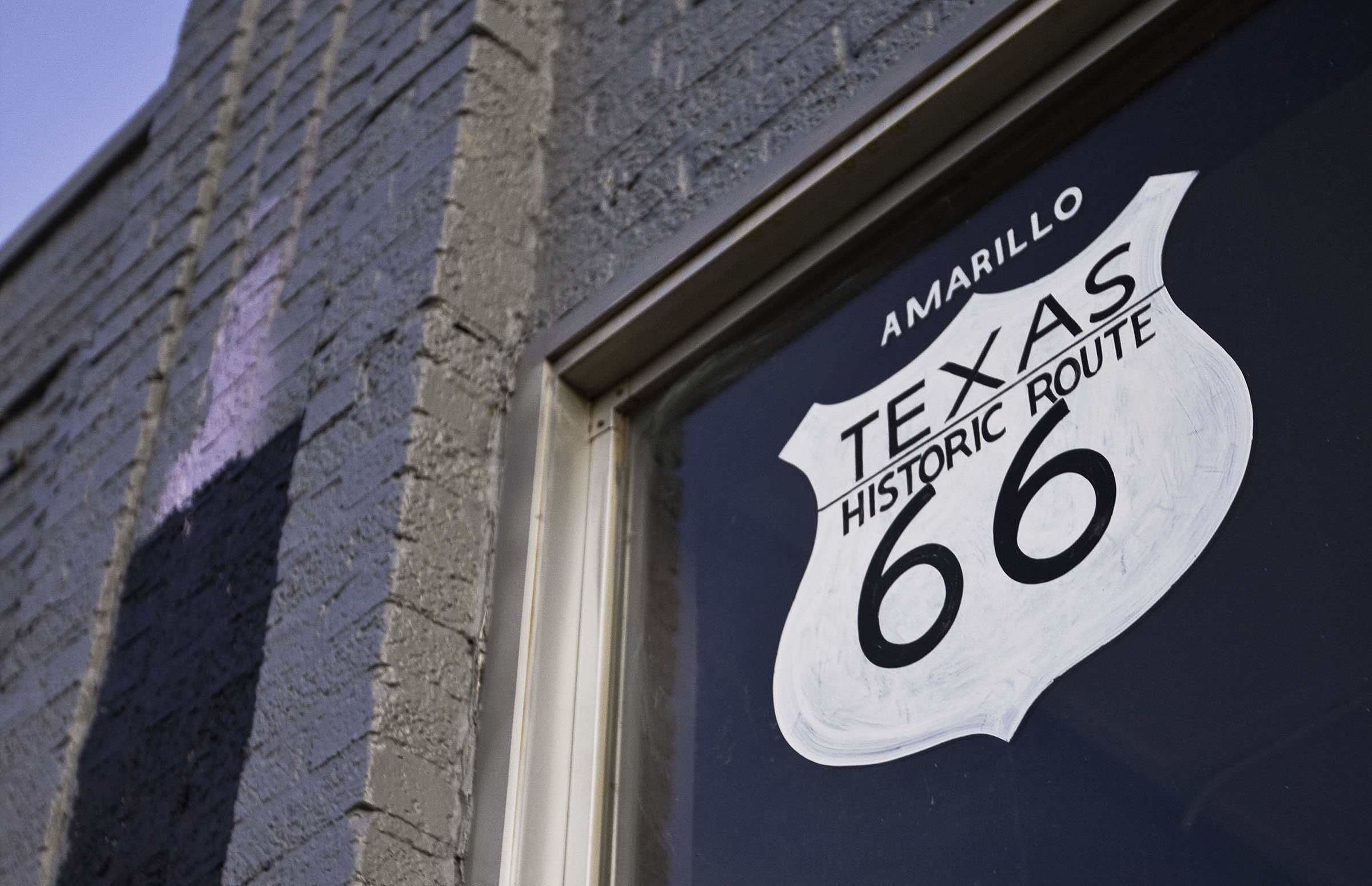
The stretch of Route 66 that runs through Amarillo is now known as West Sixth Avenue, where you’ll find restaurants, galleries, and antique stores. Photo by J. Griffis Smith
When author and photographer Candacy Taylor began researching her book Overground Railroad: The Green Book and the Roots of Black Travel in America, Amarillo landed on her radar. She reached out to the Texas Panhandle city’s tourism office for help identifying historic local sites which had been listed in the Green Book, a guide produced for Black motorists from 1936 to 1966, when those travelers were unable to depend on white-owned destinations for food, lodging, or gas. Route 66 took those travelers through Amarillo.
Few of the Amarillo homes and businesses that served Black travelers still exist. “During the process [of working with Taylor], we realized how much of that history has been lost,” says Kashion Smith, executive director of the Amarillo Convention and Visitors Bureau. “We understand the history of Route 66 and our city is not always going to be positive. But all history is important, and we want to make sure the entire story is told.”
Taylor will be appearing in Amarillo to tell that untold story on June 8 as part of the Texas Route 66 Festival, a 10-day event beginning June 1. (Purchase tickets for Taylor’s speaking event here.)
This is the festival’s inaugural year and kicks off with the Coors Ranch Rodeo on June 1, followed by a downtown block party on June 2 near Hodgetown Stadium and, on June 3, the iconic Coors Cowboy Club Cattle Drive and Parade. There will also be Route 66 bus tours that stretch across the Panhandle from Shamrock to the ghost town of Glenrio. Most activities, however, will center around Amarillo and its historic stretch of the Mother Road.
With the Route 66 centennial approaching in 2026, the timing for Amarillo’s festival is deliberate—and Texas is ahead of the curve. “Our office has been very intentional about partnering and building relationships with Texas Route 66 businesses to plan a festival that will serve as an example for how other cities along the Route should proceed with their celebrations,” says Hope Stokes, the convention bureau’s director of marketing. The goal is to continue hosting and growing the Texas festival each year until the centennial.
While Taylor’s event details a lesser-known part of Amarillo’s history, the cattle drive and parade are what people have come to expect from the city. And this year gives these events a brighter spotlight within the festival as cowboys on horseback drive 60 Texas Longhorns down Polk Street in the city center. The parade hearkens back to Amarillo’s early days, when cattle drives passing through the area eventually attracted the railroad to this isolated High Plains outpost. Smith jokingly describes those late 1800s cattle drives as an early form of business travel. Not until the arrival of Route 66 did Amarillo see leisure travelers.
“Without Route 66, Amarillo would be a very different place to live and visit,” adds Stokes. The highway became a major midcentury asset to the city’s economy. “It spawned a few of our most visited attractions and helped grow the quirky, artistic, and unexpected culture that many tourists are delighted to find here.”
Today, the Route 66 history brings a steady stream of visitors from Europe and Asia, where the Mother Road is iconic and classic westerns leave travelers eager to see the “real Texas.” (Or at least the version they know from TV and film, and which they find at places like the Big Texan Steak Ranch.)
They’ll encounter it all this summer in Amarillo, a city finding balance between reckoning with its past and embracing it via the Texas Route 66 Festival.
The Texas Route 66 Festival in Amarillo runs June 1-10. For information about the events, including prices for tickets for some events, go here.








